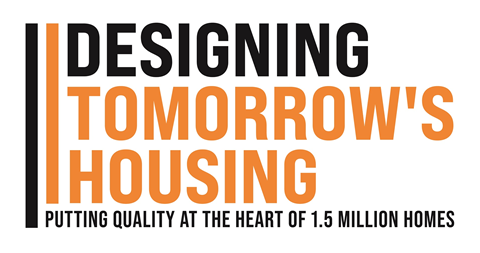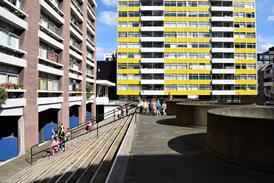Hien Nguyen outlines the delivery barriers that must be tackled if the UK is to meet its housing ambitions without sacrificing quality

The need for housing in the UK, particularly affordable, well-designed homes, has never been more urgent. Across cities, towns and rural areas, demand continues to outpace supply, pushing up prices and leaving too many people without secure, suitable places to live.
The social and economic pressure is real, yet delivering the homes we need remains a slow and frustrating process. Those working in the sector, architects, developers, planners, often find themselves up against challenges that are deeply rooted and difficult to untangle.
One of the biggest obstacles is the shortage of skilled labour. Over the years, the construction industry’s talent pipeline has steadily thinned, with fewer training routes and apprenticeships on offer.
As a result, even when projects are well-designed and approved, they are often held up because there simply are not enough bricklayers, carpenters or electricians to get the work done. Delays have become normal, costs keep rising, and the knock-on effects ripple through every part of the housing sector.
The Government has begun to respond, with new funding packages aimed at rebuilding the workforce. Recent initiatives include a £600 million investment to train 60,000 new construction workers by 2029, as well as a record £3 billion apprenticeship budget announced in May 2025.
The focus is not only on numbers but on reaching people who have not traditionally had access to construction careers: young people, career changers and underrepresented groups. But even within this push, some contradictions have emerged.
The Level 7 architectural apprenticeship, for instance, has been widely praised as a practical and inclusive route into the profession, particularly for those unable to pursue full-time postgraduate study. It blends paid work with academic learning, opening architecture to people from more diverse backgrounds.
Beyond the technical fixes, there is a broader cultural shift needed. Too often, those involved in housing work in isolation
Yet this very pathway is now at risk, following the Government’s decision to cut apprenticeship levy funding for candidates over 21. Many in the industry have raised concerns that this move could undo years of progress on diversity and leave a gap in the profession when we need more talent, not less.
Planning is another persistent issue. It continues to slow delivery across the country, particularly for smaller or community-led developments. But given how extensively it has been covered elsewhere, it is enough to say that until the system becomes more transparent, consistent and better resourced, it will remain a structural drag on housing delivery.
Behind all of this, land value quietly shapes nearly every part of the equation. High land prices absorb budgets before a project even breaks ground, pushing developers to prioritise short-term return over long-term quality. It squeezes out social housing, curtails design ambition, and deters smaller, more innovative house builders from entering the market.
In areas of high demand, the cost of land makes truly affordable housing almost impossible without subsidy or public land release. Worse still, speculative trading and land banking incentivise delay rather than delivery. Land is often bought not to build on, but to hold and sell at a profit once planning permission is granted, further constraining supply.
Policy tools like compulsory purchase, land value capture, and public interest-led land disposals exist, but are underused. Until land is treated as critical infrastructure, not just a speculative asset, housing policy will remain out of sync with delivery reality.
Beyond the technical fixes, there is a broader cultural shift needed. Too often, those involved in housing work in isolation. Architects, developers, engineers, policymakers and communities each bring valuable insights, but if they are not engaged from the start, important issues such as site challenges or sustainability goals emerge too late in the process. This disconnect adds cost, creates conflict and results in homes that do not always meet the needs they are meant to serve.
More collaborative models are gaining traction. Integrated Project Delivery, for example, brings all key players into the room early, so risks and ideas are shared, not siloed. Public-private partnerships, supported by organisations like Homes England, are helping align efforts across sectors. And community-led models such as co-housing and self-build schemes are showing that, with the right support, residents themselves can lead the way in delivering thoughtful, affordable homes that strengthen local identity.
Raising standards also depends on the people who deliver housing on the ground
Architects, in particular, have a vital role to play in this. Our expertise in design, sustainability, land use and placemaking is often underused in policy and planning. But when our voice is included, whether in shaping local frameworks or advising on wider housing strategy, the results tend to be better balanced, more resilient and more responsive to the people who live in these homes.
And yet, one question remains at the centre of all this: how can we raise the bar on housing quality while still delivering 1.5 million homes by 2030? That is the challenge laid out in BD Online’s current campaign, Designing Tomorrow’s Housing: Putting quality at the heart of 1.5 million homes, and it is the one that should guide every policy, funding decision and project brief. The answer lies not in choosing between quantity and quality, but in finding mechanisms that insist on both.
One such mechanism is post-occupancy evaluation (POE). Mandating POEs for larger housing schemes at one and five years after completion could provide vital feedback on thermal comfort, daylight, acoustics, and resident satisfaction. These insights, made publicly available through a national dashboard, would create a feedback loop that rewards quality and exposes underperformance.
Raising standards also depends on the people who deliver housing on the ground. We remain hopeful that the new Government funding packages will finally translate into the long-overdue investment in upskilling and construction apprenticeships. Many of the most persistent issues in housing, from thermal bridging to poor detailing, stem not from poor design, but from skills gaps on site.
>> Also read: Designing Tomorrow’s Housing: Putting quality at the heart of 1.5 million homes
>> Also read: Nansledan: can design codes and long-term stewardship deliver better housing?
Procurement is another pressure point. The industry needs to move away from lowest-cost tendering and toward a whole-life cost model. This would mean rewarding bids that come with robust stewardship commitments: long-term maintenance plans, performance guarantees, and post-construction warranties. Where developers demonstrate measurable outcomes, such as operational net-zero carbon or top-tier performance ratings, they should receive tax credits or grant uplifts.
Ultimately, the challenge is about more than just hitting housing targets. It is about creating places that people want to live in, homes that are affordable, energy-efficient, and connected to the communities around them.
Getting there means tackling the structural problems we already understand: a skills shortage that needs real investment, a planning system that must be more agile and transparent, a land market that must be rebalanced in the public interest through strategic partnership and transparency, and a delivery culture that rewards collaboration rather than fragmentation.
We have laid out the problems: too few skilled hands, tangled planning rules and ideas stuck in silos, and shown how fresh funding, smarter approvals and genuine teamwork can turn things around. It will not happen overnight, and we will need to keep a close eye on how apprenticeships, planning reforms and community-led builds play out on the ground.
But if we protect those hands-on learning routes, bring everyone into the same conversation from the start, and back it all up with the right resources, we stand a real chance of not just hitting our housing targets but creating places that people are proud to call home.
The housing brief: embedding design in national delivery

Housing is an undeniable priority for the UK with renewed government focus putting it at the top of the agenda - but he big question is how do we ensure quality while driving for quantity?
Building Design’s new campaign Designing Tomorrow’s Housing will investigate how the delivery of 1.5 million new homes can be reconciled with maintaining high design standards.
Rather than simply reporting on figures and planning reforms, this campaign will delve into the challenges and opportunities of integrating exceptional design, robust planning standards, and sustainable placemaking into the mass housebuilding process.
We know that design and housing professionals come up against these issues in their everyday working lives, which is why we want to hear from you - our readers - about your experiences.
Click here to read more about the campaign
Postscript
Hien Nguyen is associate director at MCW Architects.
















No comments yet